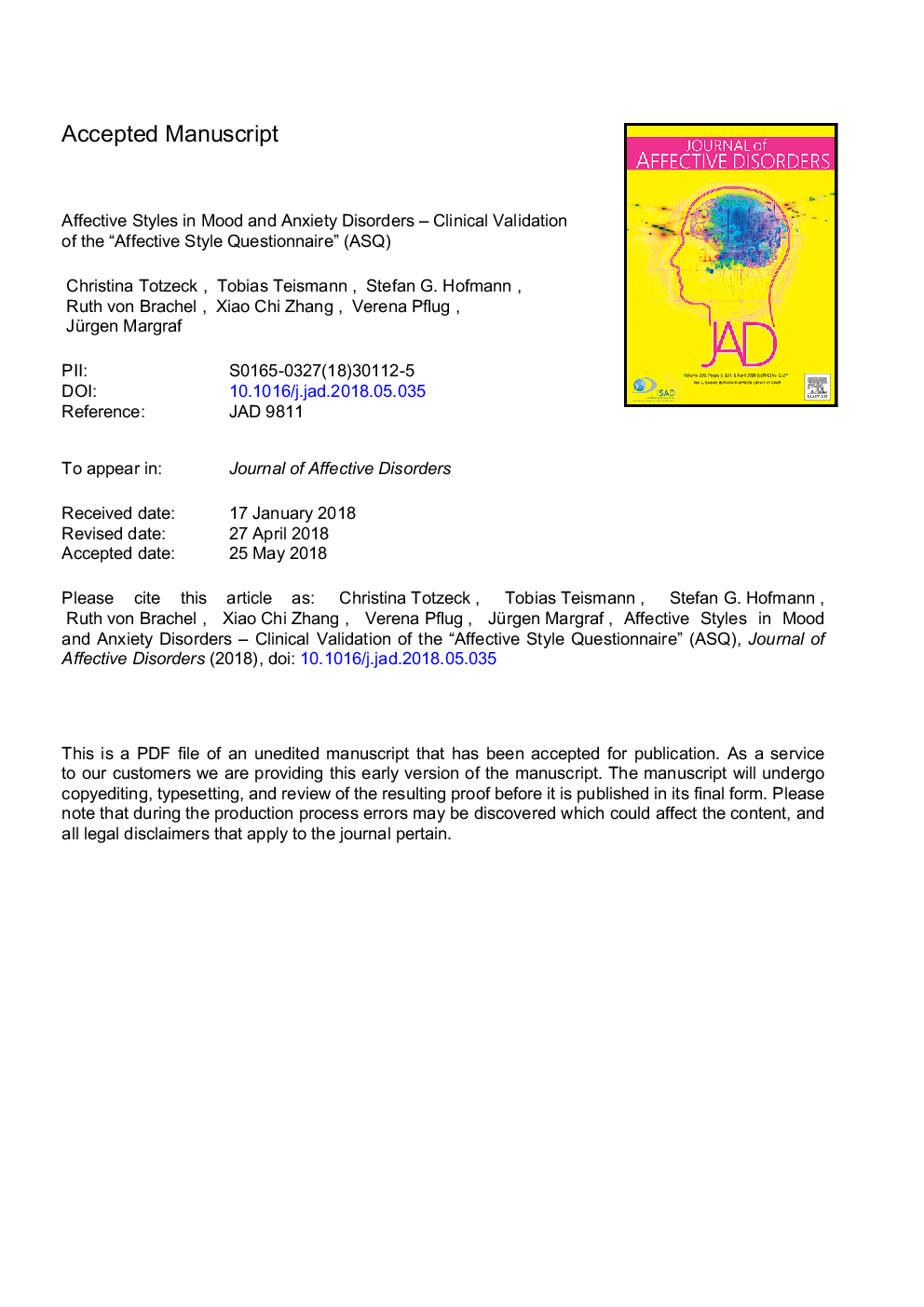| Article ID | Journal | Published Year | Pages | File Type |
|---|---|---|---|---|
| 8815269 | Journal of Affective Disorders | 2018 | 30 Pages |
Abstract
A number of limitations must be taken into consideration while evaluating the present study. First and foremost, the clinical data were based on primary diagnoses. We did not ascertain comorbid diagnoses. This distinction may be important, since affective and anxiety disorders are often linked to each other. In addition, we only used data collected before the beginning of psychotherapeutic treatment and were therefore not able to analyze changes in affective styles during and after intervention. Furthermore, all data were based on self-reported information of patients. We did not implement either a therapeutic rating of affective styles or physiological measures, for instance arousal, which could have shown whether the used strategies successfully reduce negative emotions. Future research should address this question. Another limitation is the fact that we concentrated on the main categories of mental disorders and, therefore, did not subdivide patients with affective and anxiety disorders in terms of their concrete diagnoses. This is of special importance, because there might also be differences in affective styles within the main categories.
Related Topics
Health Sciences
Medicine and Dentistry
Psychiatry and Mental Health
Authors
Christina Totzeck, Tobias Teismann, Stefan G. Hofmann, Ruth von Brachel, Xiao Chi Zhang, Verena Pflug, Jürgen Margraf,
